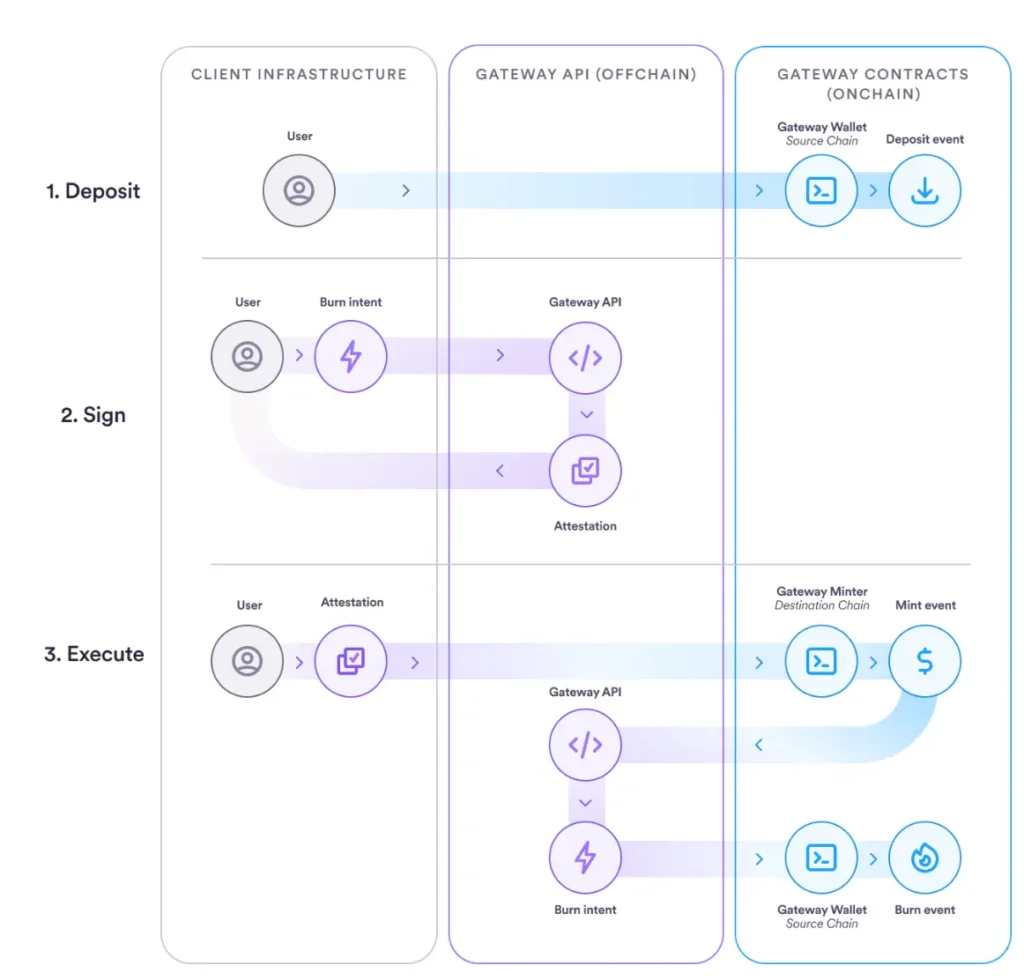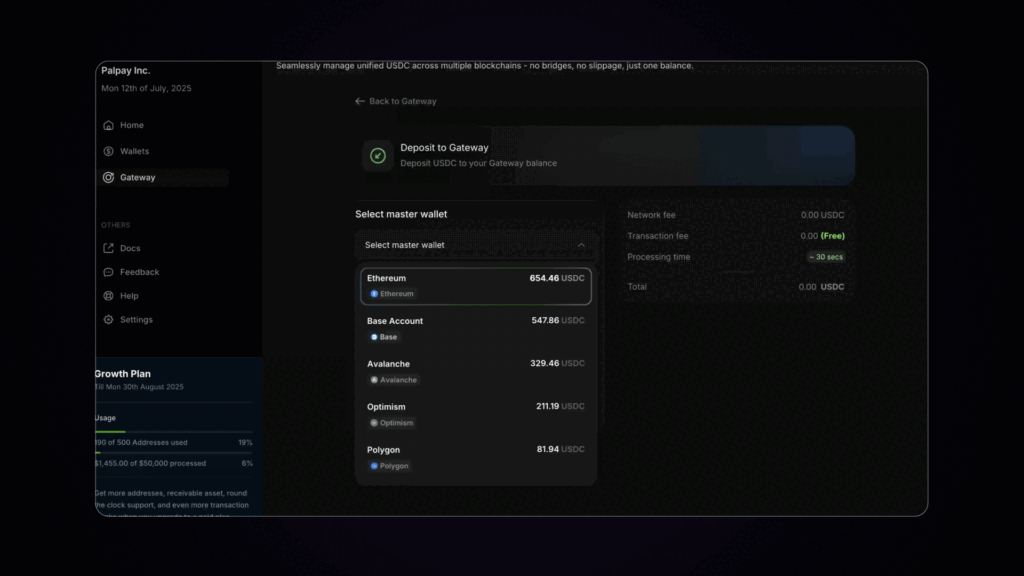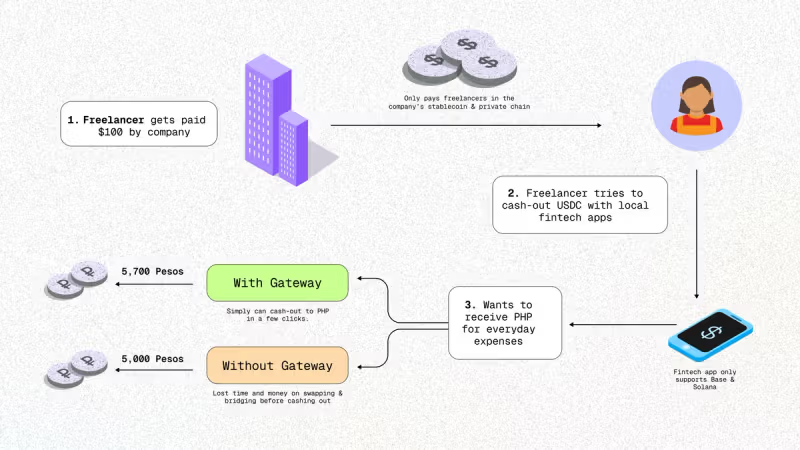In Brief
- Circle launched the Circle Gateway on August 19th to address stablecoin fragmentation.
- BlockRadar integrated this product into its infrastructure for better USDC management.
- BlockRadar’s upgrade improves treasury management, automating processes across multiple chains.
On Tuesday, August 19th, Circle officially launched its Circle Gateway within its mainnet. The product offering tackles a main issue within stablecoin adoption locally and globally: fragmentation. As if anticipating its launch, BlockRadar quickly stepped up, integrating this new product directly into their infrastructure.
The Circle Gateway is a step towards ensuring USDC reconciliation, and for BlockRadar, it provides an added benefit by offering its clientele a product that allows for better management of their USDC deposits.
For beginners, here’s a simple breakdown of how this recent update to BlockRadar makes the difference.
Circle Gateway: Solving the Multi-Chain Dilemma
Stablecoins have redefined how fintechs, users, and businesses approach finances. Within less than a decade, these digital assets are practically a standard offering for most blockchains. However, most ecosystems remain isolated; Ethereum users cannot directly spend their USDC on Solana without a bridging process.
This fragmentation causes added layers of complexities, and for most users, the easier it can be done, the better. For African users, this means added transaction costs, forcing many to have 10+ wallets on different chains. For businesses, maintaining liquidity on each chain is a non-negotiable fact. Inevitably it slows down operations velocity, adds unforeseen costs, and increases operational risk, forcing many to opt for just one or two ecosystems.

Through various intricate products like the Gateway API, users can receive or send USDC via its supported chains. It’s direct, clean, and most important, easy. For fintechs offering stablecoins, it’s cleaner records, coupled with USDC wallet automation, tracing payments instantly.
The upgrade focuses on speed, flexibility, and simplicity, juggling various processes that would be tedious for most companies.
Where BlockRadar Comes In: Automating USDC Reconciliation
The entire approach for BlockRadar is making stablecoins more available for fintech globally, but let’s narrow down our focus to where it really matters: Africa.
In a previous article, we highlighted how they provides fintech companies with the infrastructure they need to provide stablecoins. Shortly after Circle Gateway went live, the platform swooped in to integrate its multi-wallet solution within its own system. Having processed over $100 Million in Total Onchain Volume last month, the update takes them into the next step in making stablecoins efficient and straightforward

Auto-settlement is another perk to to the USDC reconciliation Fintechs can use programmable rules to automatically sweep funds from master wallets into the Circle Gateway once certain thresholds are met. As an operator, scrambling to meet those end-of-month deadlines will be a thing of the past.
For BlockRadar, integrating the gateway deals with the complexities of having to shift from one chain onto another. You can now deposit from anywhere and still see the same balance reflected. It’s more about whether it works without having to switch chains, go through dozens of drop menus, and see your stablecoin dwindle due to transaction costs. All revenue is automatically routed into a single dashboard, and it’s not limited to just USDC.

Businesses only care about whether or not funds have “landed” in the right place and whether their end users can send and receive stablecoins in a single, simple, and straightforward manner. It’s more on how to simplify stablecoin deposits, and BlockRadar has exactly what fintechs are looking for.
A Frictionless Future for the End-User
The transformative impact BlockRadar has within Africa focuses mainly on adoption. Integrating Circle Gateway is a huge step in upgrading the continent’s adoption. Most people do not want to think about blockchain networks; they want a cheaper, safer, and faster alternative to send their money. The continent boasts a vibrant youth populace, with many seeking alternative forms of income, and stablecoin gives us that.
CHECK OUT: Nigeria SEC: Stablecoin Rules to Empower Users and Protect Markets.
BlockRadar sets up the rails that this generation needs, and with startups popping up, all efficiency and simplicity will reign. When users and businesses no longer have to worry about chains, gas fees, or bridging, they focus on what matters: innovating and upgrading their services.
The multi-chain wallet solution gives freelancers the simplicity they crave and fintechs one less wall to knock over.
